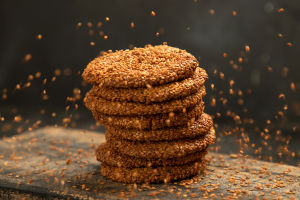
When it comes to cooking pasta, we all think we know how to do it. It seems simple enough – just boil some water, throw in the pasta, and wait a few minutes. But, just like with any dish, the right technique can make all the difference.
Cooking pasta isn't as easy as it seems; subtle differences in time and temperature can significantly change the taste and texture of the pasta. So, how exactly should we cook it for the best results? Let's take some advice from expert chefs.
Step One: Boil Water First – No Exceptions
We've all been there – you're ready to cook pasta and, in a rush, you toss the pasta into the pot as soon as you start heating the water. However, this is one of the biggest mistakes we can make. According to Francesco Mazzei, a renowned Italian chef based in the UK, it's crucial to start with hot water, not cold. Why? Because hot water heats up much faster, which means we can cook our pasta sooner and save some energy. Plus, it doesn't affect the texture or flavor of the pasta negatively.
When the water boils, it's time to add salt. Salting the water is not just a flavor enhancer – it's a key to perfect pasta. Gennaro Contaldo, a famous Italian chef, explains that adding salt helps bring out the natural taste of the pasta, making it much more flavorful. He suggests waiting for the water to come to a full boil before adding the salt. The salt should dissolve quickly, so it won't change the temperature of the water, allowing the pasta to cook evenly.
Step Two: The Importance of Salt
Why is adding salt such a crucial part of cooking pasta? Well, it's not just for flavoring the pasta. Chef Lina Nicolai from Washington, DC, emphasizes that salting the water also ensures that the leftover pasta water has some flavor, which we can use to mix into our pasta sauce. This is a trick that professional chefs often use to make the sauce cling to the pasta better and create a more flavorful dish overall.
But it's not just about adding flavor – the salt actually helps the cooking process in a scientific way. When we add salt to water, it raises the boiling point slightly. This means that the water will stay at a higher temperature when cooking the pasta, helping the pasta cook at the perfect consistency. Steve Samson, a chef based in Los Angeles, explains that the salt helps create a more stable boiling point, ensuring the pasta is cooked at the right texture – firm but tender.
Step Three: Timing and Stirring Matter
Once the water is boiling and the salt is added, it's time to drop in the pasta. But here's another mistake many of us make: waiting too long to add the pasta. The water needs to be at a full rolling boil before we toss in the pasta. If we wait too long or add the pasta too early, the pasta will absorb too much water, becoming mushy or clumpy.
That's why stirring is so important! Gennaro Contaldo points out that stirring the pasta as it cooks helps prevent it from sticking together. Pasta can easily clump together if left alone, so we should stir regularly to keep it loose and evenly cooked. Don't skip this step, especially during the first few minutes of cooking.
How Long Should Pasta Cook?
As for how long the pasta should cook, it's important to note that the cooking time can vary depending on the type of pasta you're using. But one thing is certain – it should always be al dente, meaning it should have a slight firmness when you bite into it. There's no need to rush; follow the package instructions, but taste test a minute or two before the suggested time to ensure it's cooked just right.
Whether you're cooking spaghetti, fettuccine, or penne, remember that the water should always be at a boil before adding your pasta, and you should stir regularly to keep it from sticking. As Chef Patrick Money from an Italian restaurant in the US says, this is the secret to getting perfectly cooked pasta every time.
Don't Forget the Pasta Water
One of the most useful tips for cooking pasta comes after it's done. The water we used to cook the pasta is a secret weapon that many of us overlook. By saving a bit of this pasta water before draining the pasta, we can use it to help bring our sauce together. The starchy water helps thicken the sauce and makes it stick better to the pasta. This is an essential step for making sure the sauce clings evenly to the pasta, creating that rich, cohesive taste we all love.
Conclusion: Cooking Pasta Like a Pro
Cooking pasta may seem like a basic skill, but following these expert tips can elevate the dish to a whole new level. By making sure the water boils before adding the pasta, salting it to enhance the flavor, stirring regularly to avoid clumping, and using that starchy pasta water to perfect the sauce, we're guaranteed to create a delicious meal every time. Remember, it's all in the details – so next time you cook pasta, take your time, follow these steps, and enjoy the perfect dish!
What do you think, Lykkers? Do you have any tips or tricks you swear by when cooking pasta? Let us know your secrets for cooking the perfect pasta!


